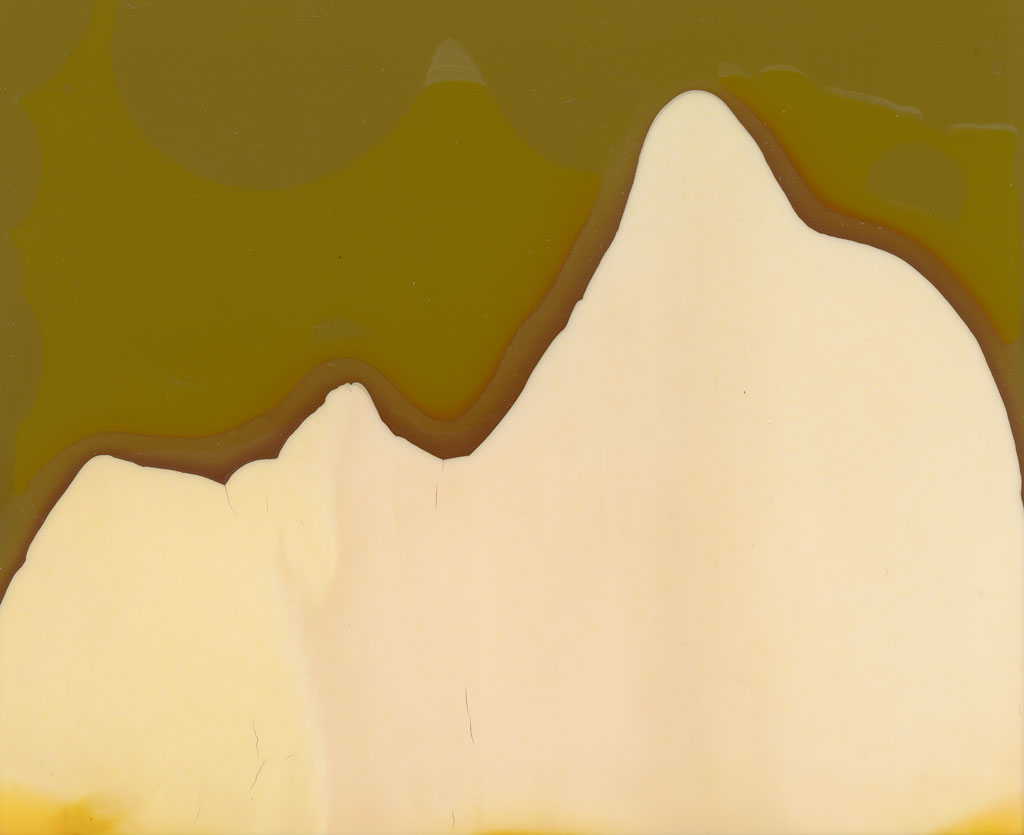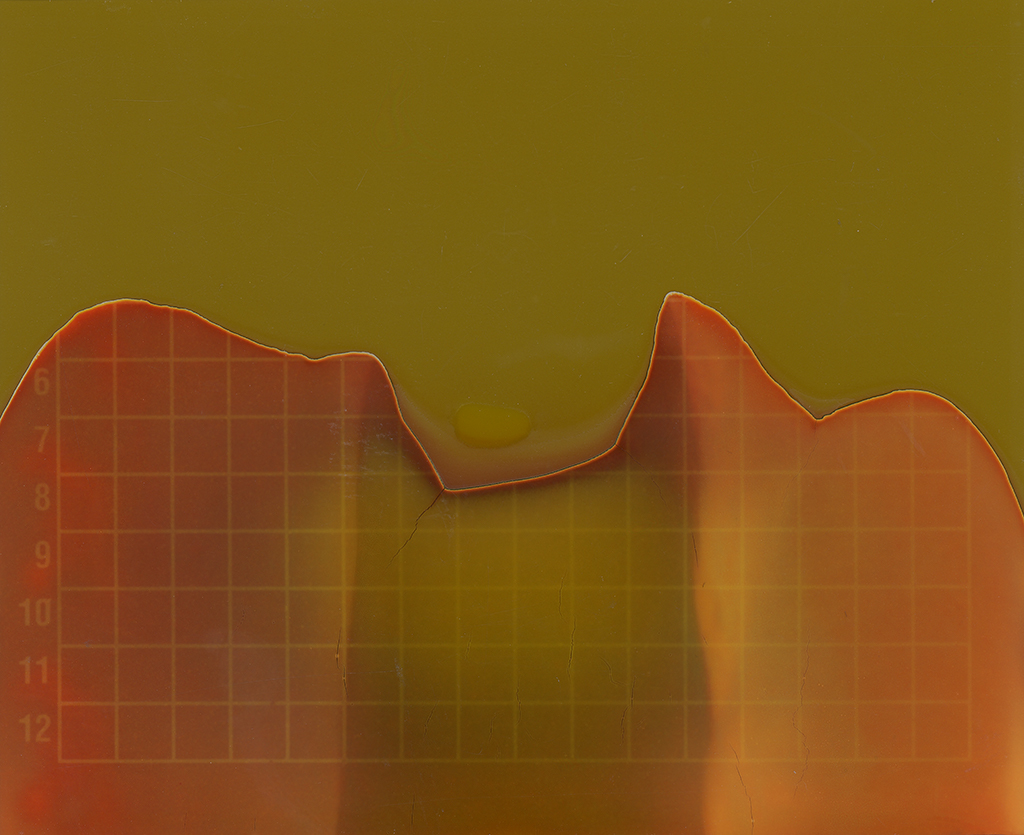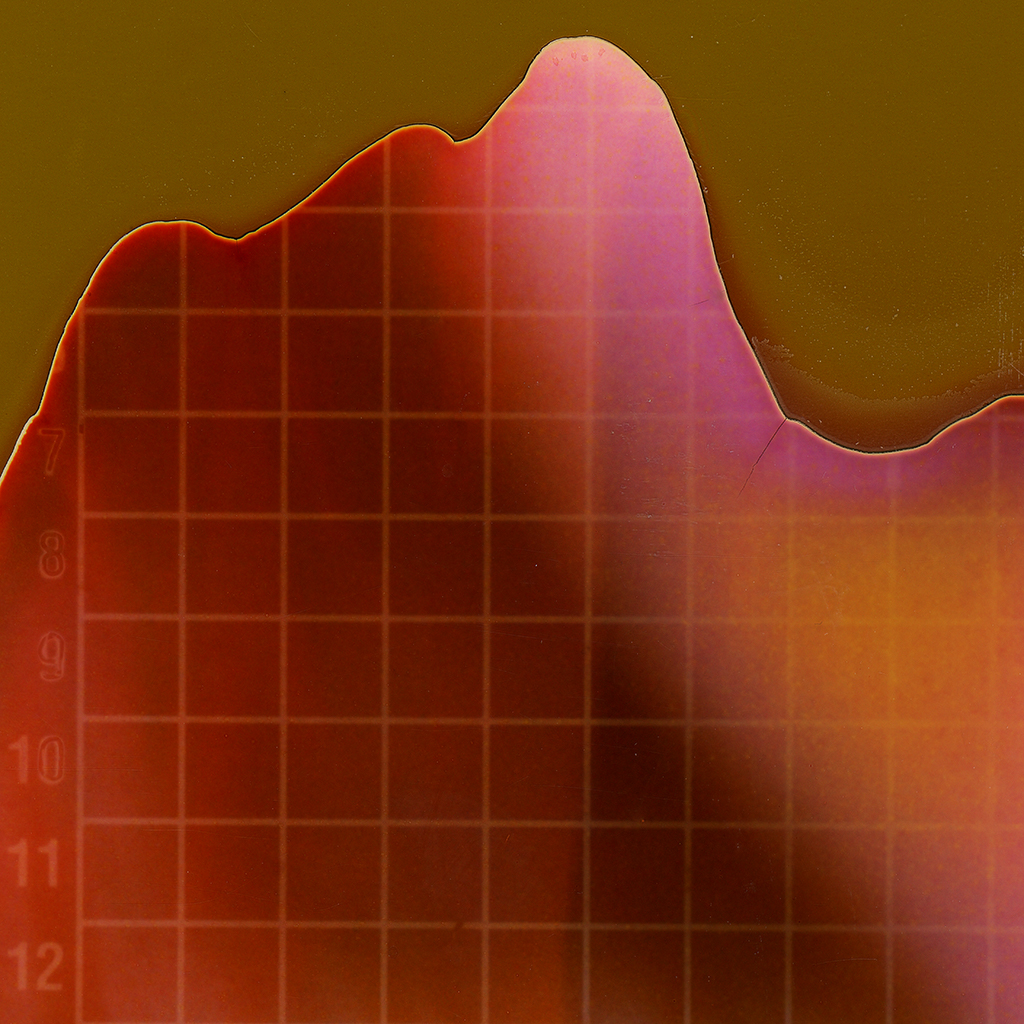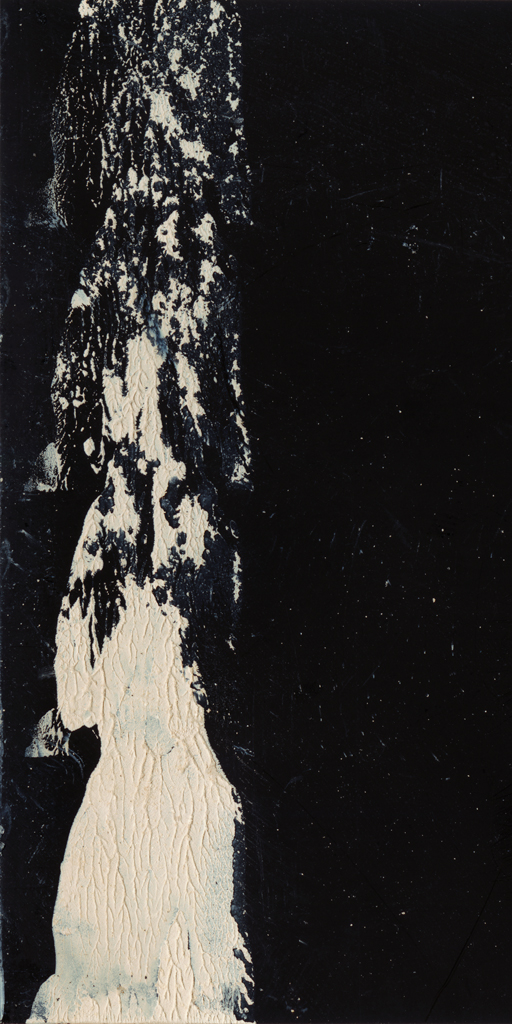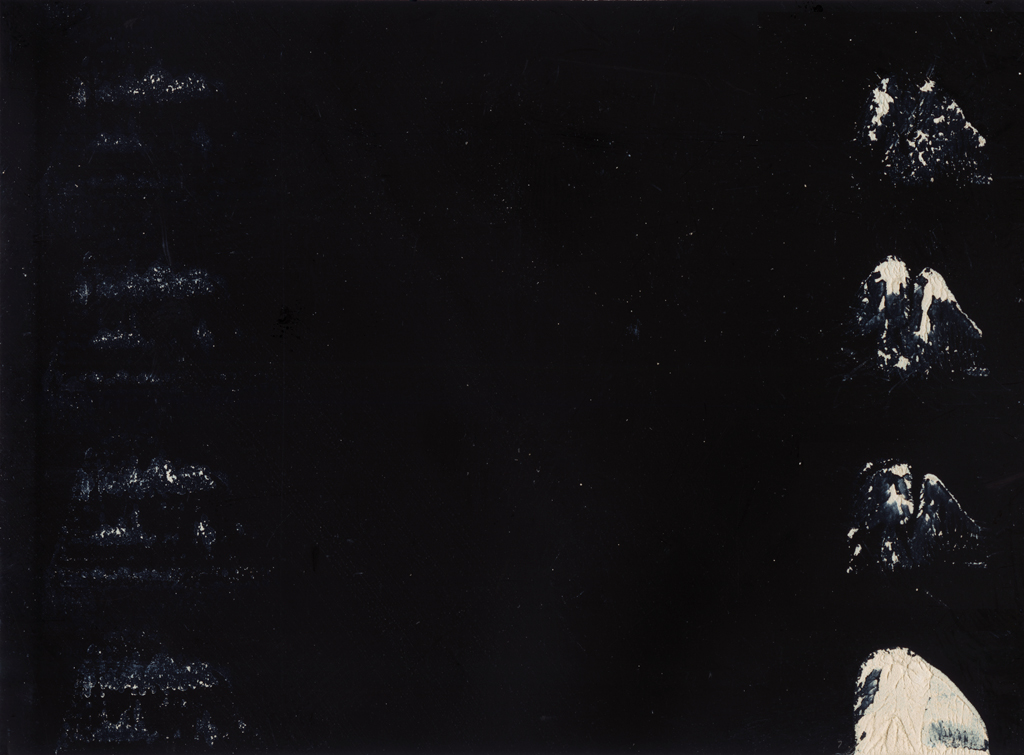Field Explorations
Notes from Fernando Casas, PhD
Allow me to share with you a few thoughts about Leslie Field’s new body of work, based on Polaroid films, entitled UR-Forms, UR-Forms Passages, Cosmos Tides, and Cosmos Tides Neaps. “Ur” comes from the German meaning “primeval, original.”
I think that Leslie Field, Artist Explorer, has been dwelling on that fascinating boundary between what is a product of nature versus what is a human creation, and in so doing offers us a unique image of our humanity.
It seems to me quite evident that we human beings exist in a fragile ontological boundary between Nature and Artifice. On the one hand we are evidently the result of cosmic and biological evolutionary natural forces; and on the other hand, we are creators of artifice: we create science, art, economies, the internet; we invent a great diversity of machines and devices – from space shuttles and particle accelerators to automobiles and polaroid film.
Moreover, we are aware of our own selves, as creators, and thus we understand ourselves as these precarious entities existing in this fragile and fascinating wave crest: a boundary between the construction of nature and our own self-construction – between nature and artifice.
Leslie Field saved a special kind of film: unused, gridded, and expired Polaroid film; the works we see here came from that. The film responded to light only to a very limited extent. Instead, the photosensitive chemicals on the film oozed through the surface on the front and the back. These organic curves, flows, and branching are suggestive of mountains, volcanoes, lava flows, palpitating hearts, vegetation, and coral reefs. Some remind me of the undulating patterns on the sand left by ocean waves, others of sea foam. There is a striking resemblance to drawings made by the explorer Alexander von Humboldt depicting the Andes Mountains.
On the one hand these images look familiar and natural, but on the other, they look like nothing we have seen before. The colors are unusual; they are at once mystifying and gorgeous. Strange olive greens of disquieting density occupy large areas. Monumental pale shapes contrast with ephemeral points of light in black fields.
They do not look like photographs, nor do they look like any kind of painting, for they are the result of a very unusual process of pigmentation.
Leslie Field has exposed this boundary between the human artifice and the natural world, recognizing in these images something both visually interesting and conceptually significant. More than simply unearthing it, she selected and distilled the material with a keen aesthetic eye and great sensibility, elevating it to that high artifice that we call fine art.
In these images we can read the struggles as well as the gifts and successes that we encounter daily between our natural inheritance and our creative efforts. They portray, abstractly, the UR-ground of our natural and spiritual reality.
November, 2016

